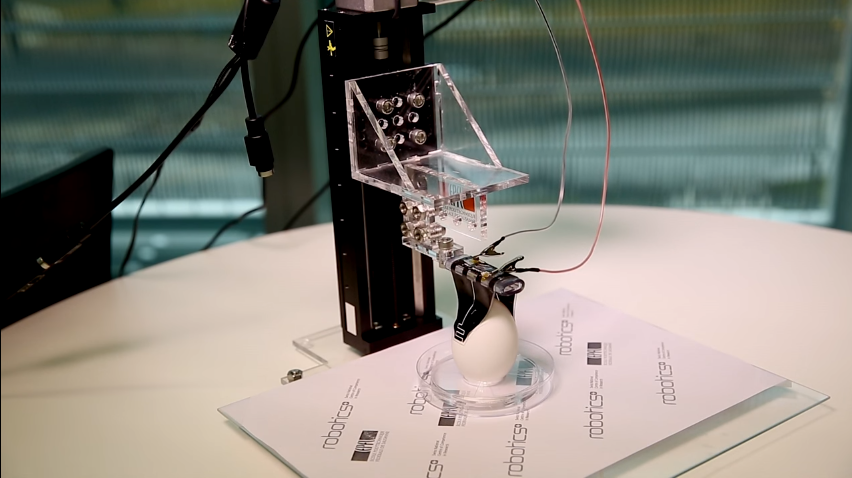
Robots have many strengths (self-replication, shape-shifting, upgrade potential, advanced intelligence, etc.) but delicate manners are not one of them. Handling delicate objects with care is still part of the fine-tuning humans work on a daily basis, hoping that one day they will create the perfect android, that surpasses our capabilities in every sense. Until then, EPFL (École polytechnique fédérale de Lausanne) has devised robotic grippers that can pick up fragile objects like eggs.
In doing that, they put electroadhesion to good use. In case you don’t know what that is, think about that time when you charged a baloon rubbing it against your hair – it stuck to the wall or ceiling afterwards. That same electrostatic effect was used to make flexible, stretchable electrode flaps work. Once you connect those babies to electricity, they act like human fingers; they can grasp objects, learning their shape on the go, not beforehand. They can contort to an oval shape, like the one eggs have, or lie flat on a surface and grab a piece of paper.
These are not the first ones of their kind, but the rest of them have to be pneumatically controled and told what sort of shape they’re dealing with ahead of time. Moreso, “the novelty of our soft gripper is the ideal combination of two technologies: artificial muscles and electroadhesion,” says PhD co-supervisor Dario Floreano of EPFL. “Our unique configuration of electrodes and silicone membranes is what allows us to control the bending of the flaps and the electrostatic grip,” adds PhD co-supervisor Herbert Shea.
Interested to replicate them at home? This is how they were put together, if you’re a Mythbusting fan like me:
The electrode flaps consist of 5 layers: a pre-stretched elastomer layer sandwiched between two layers of electrodes, plus two outer layers of silicone of different thickness. When the voltage is off, the difference in thickness of the outer layers makes the flaps curl outwards. When the voltage is on, the attraction between the two layers of electrodes straightens out the membranes. This straightening of the membranes from a curled position mimics muscle flexion.
At the tips of the flaps, the electrodes of each layer are designed for optimal electrostatic grip. These interdigitated electrodes, which look like two combs fitted together, create an electrostatic field that causes electroadhesion.
If you can’t see what good that will do to science in the immediate future, think about the fact that these flaps can carry up to 80 times their weight. Scientists believe they could be used for prosthetics, of course, but also to capture debris in space.
Follow TechTheLead on Google News to get the news first.




